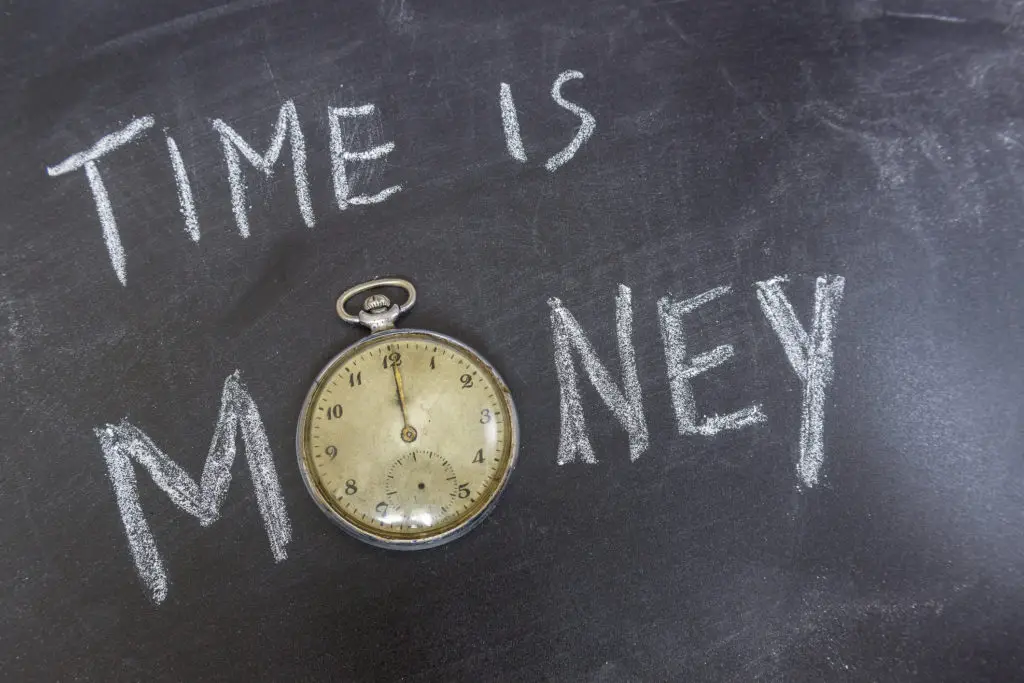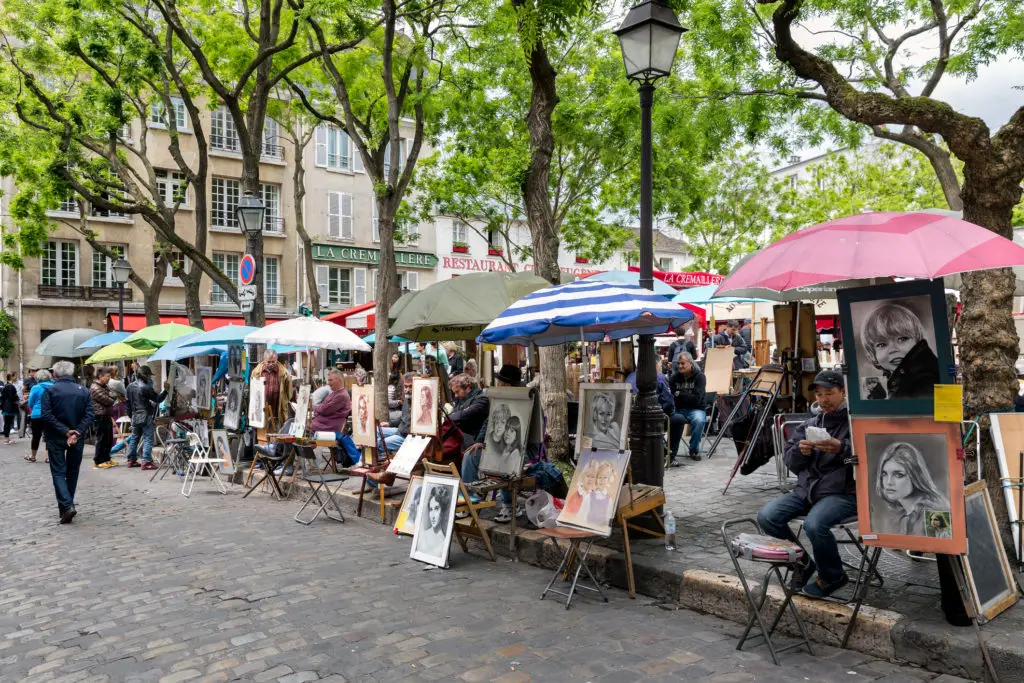As an artist, one of the most common questions you’ll get asked by collectors is how much your inspired artwork costs. It’s even more important to be able to price custom pieces from a client’s creative brief. So, what goes into pricing an art commission?
Generally, three main cost factors affect art commission prices. Materials costs include the raw supplies based on the size of the work and any shipping cost. Time cost refers to the number of hours spent creating the piece and consultation time. The artist’s experience also impacts the rate.
We’ll break down these three factors you need to consider when setting your art commission prices. If you are a collector, these cost factors will set a tone for what to expect when budgeting for an art piece.

MATERIALS: Using Size as The Main Determinant for Art Commission Prices
The cost of materials is generally the most straightforward cost factor to determine. This includes the cost of the canvas or paper, paints, brushes, software subscriptions in the case of digital art, minting fees in the case of non-fungible tokens (NFTs), and any other supplies used to create the artwork.
The artist will also factor in the size of the piece. On average, larger works cost more because they require more materials and labor time to complete.
There are two size-based formulas an artist could use to set the price for art commissions:
- Square-Inch pricing = (Square Inch x Base Rate) + Cost of Materials
- Linear-Inch pricing = (Linear Inch x Base Rate) + Cost of Materials
Of course, your measurement unit may also be in centimeters, meters, or feet, depending on your region and the size of the creative work.
Example of square-inch pricing
This formula uses size in inches as the primary driver of its price. It takes the height (h) and width (w) of the piece, say a painting, in inches and multiplies it by base rate (b). The formula is:
h x w x b = size price
If an artist has a base rate of $2 per square inch and the painting is 16 inches x 20 inches, that would come to a total cost of $640 for the artwork.
Also, be aware that the price difference between smaller and larger paintings is too drastic when you price them by the square inch. For example, a 16 inches x 20 inches painting with $2 per square inch is $ 640, while a 30 inches x 50 inches piece would cost $3000.
So if you create small and large works, you will need to make tweaks where the smallest work is priced higher than large pieces per square inch. Otherwise, the smaller works will be too cheap, or the larger works will be too expensive.
Example of linear-inch pricing
Some artists prefer the linear-inch pricing strategy (pricing by perimeter) because it has a more lateral transition and makes more sense as the pieces get larger. As the pieces get bigger, the prices don’t jump as much.
The math for this pricing strategy is simple- add the height(h) and width(w) of the piece in inches, and multiply that by the linear inch base rate (b). The formula is:
(h + w)x b = size price
The linear inch base rate is usually higher than the square inch base rate to make up for the flattened pricing between small and large works.
For example, if an artist has a linear inch base rate of $17.8 per inch, and the painting is 16 inches x 20 inches, that would come to a total cost of $680 for the artwork.
| Variables | Size | Square inch base rate | Square-inch price | Linear-inch base rate | Linear-inch price |
| Large painting | 16” X 20” | $2 | $680 | $17.8 | $680 |
| Small painting | 30” X 50” | $2 | $3000 | 17.8 | $1424 |
In both scenarios, the cost of materials is added after the size-based price is determined.
Lastly, if the artwork is being shipped, the artist will also need to include the shipping cost of the finished piece in their estimate. This includes packaging materials as well as actual shipping fees.

TIME: Using Time as The Main Determinant for Art Commission Prices
The time factor is a bit more challenging to quantify as sometimes it includes the number of hours spent physically working on the piece and the time spent on consultations with the buyer, any preparatory work, research, and brainstorming.
There are also two time-based formulas that artists can use:
- Hourly Rate = Base Rate (b) x Number of Hours Worked (h)
- Flat Rate= is one price for the entire project, no matter how long it takes you to complete.
If an artist is charging by the hour, they will need to keep track of their time to give the buyer an accurate estimate. There are software programs and apps that can help with this. I use Toggl to keep track of my contract work, and Mike prefers Pendulums since it’s free and open-source software (FOSS).
The hourly rate will depend on the artist’s skill level, experience, and location. For example, an artist in New York City will likely charge more per hour than one in a small town.
Experienced artists typically use flat rates only for projects they are familiar with and, therefore, can make a reasonable estimate of how long it will take.
Flat rates are also more favored when the value of the artwork is more important than how long it takes to complete. For example, an artist may charge a flat rate for a logo design because even though it might be reasonably quick to finish, it has a lot of value as it gives longevity and branding to the company that commissioned it.
Which Rate Should I Use?
| Hourly Rate | Hourly Rate |
|---|---|
| You are new to freelancing | You’re experienced with the project and can estimate how long it will take you to complete |
| Working with a project with less-defined specifications | The client is looking for a set final price |
| Unstructured and sporadic commissions | The scope of work is well-defined |
Besides the hourly rate and flat rate, artists also consider the type of art they create and the project’s complexity. In particular, oil paint is more expensive and labor-intensive than watercolor. Canvases are also more expensive than paper, and unique pieces of art cost more to make than pieces that are in editions, like lithographs.

ARTIST: Using Experience as The Main Determinant for Art Commission Prices
In practice, artists often look to each other for clues on what they should charge. This is called pricing by comparison. This is because no matter how unique one’s art is, it is also similar in certain ways to art made by other artists.
With the pricing by comparison strategy, the artist researches the art market for the following:
- similar art to their own
- the artists who make that type of art
- artists with equivalent experience and qualifications as them
- what those artists charge for their work, and why.
This information provides a ballpark guide for setting their prices.
Competitive Pricing
From the pricing standpoint, art pricing can be estimated similarly to any other product or service in that many people who buy it tend to compare prices before they buy.
I’ll give you a fairly standard example. Suppose you want to buy a new car. You’ll probably visit several dealerships and compare the prices of the same model car.
Now, suppose you want to buy a painting. You might go to a bunch of galleries and compare the prices of similar paintings. Or, you might visit several artists’ websites and compare their prices.
In both cases, you’re comparing prices to find the best deal. If you see two similar paintings that you equally like and are similar in size, medium, and complexity, but one is $1750, and the other is $2,000, you’re probably going to buy the first painting.
To the artist: Price your work competitively, especially if you’re still establishing your body of work and client list. Doing this increases your chances of making future sales.
To art collectors: No matter how you arrive at your art commission price, understand that your piece is custom. As an art patron, you’re investing in a unique piece and your artist’s ability to inspire, delight, and emotionally touch all who view a creative work.




